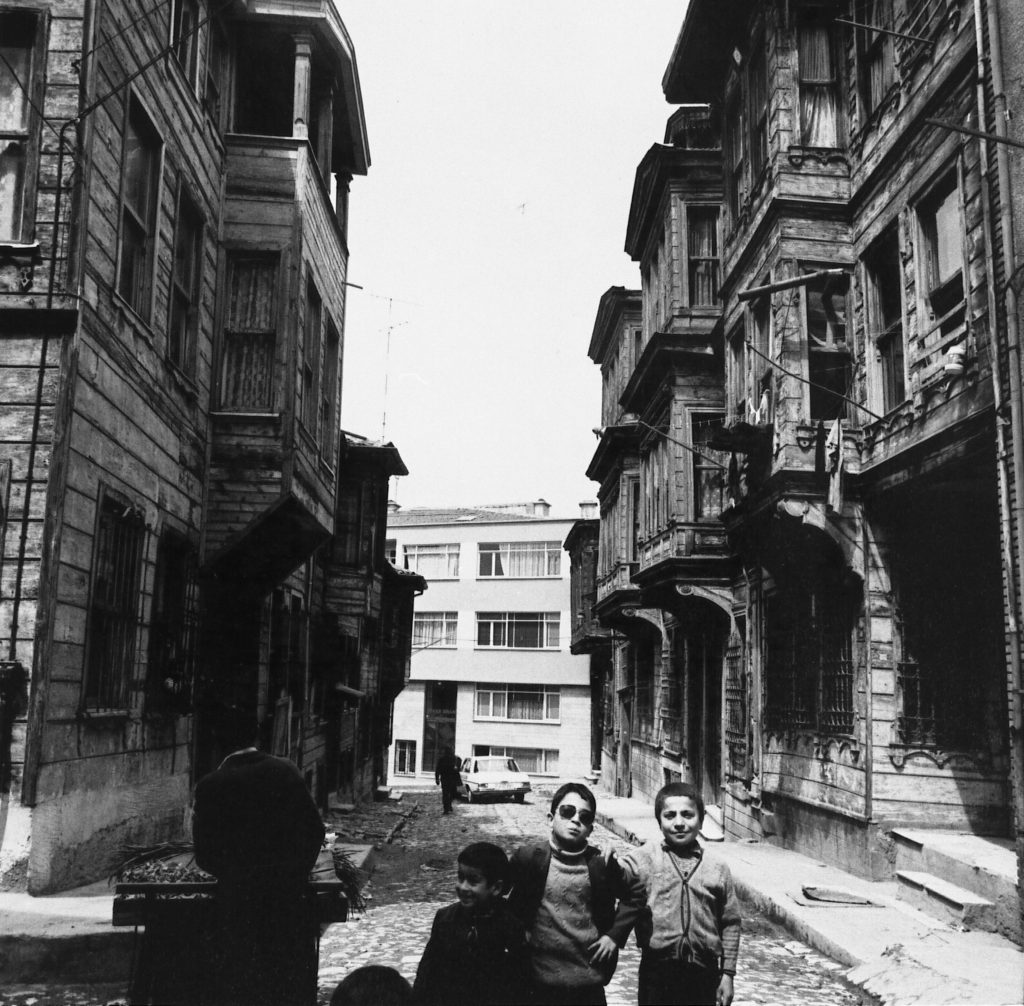Our monthly photograph that we have chosen from our archives depicts a street in the Fatih district of Istanbul. Houses with bay windows line the two sides of this street. This picture tells a lot about Ottoman architecture and its destruction. The concrete house at the end of the street is a proof of the architectural transformation. These types of bay windows, which almost covered the streets, worried the Ottoman administration. As a result, the administration would issue regulations about them from time to time. Bay windows were sometimes demolished to widen the streets and regulations limited the size of them, as well, because fires were a constant danger in Istanbul. On occassion, people were prohibited from even placing flower pots in their bay windows. In addition, the Ottoman administration sometimes collected a bay window tax. Fires were not the only danger. Pack animals could also knock them down. In certain periods, bay windows were outright banned.
Ornamented bay windows were the most striking part of these houses. Signficantly, they were used by women, whose participation in the public space was limited, as a means to interact with the street. Therefore, bay windows blurred the line between the inside and outside. In the Ottoman period, the outside, specifically the neighborhood, was an extension of the family. This is evidenced by the children playing in the street. Until they were replaced by conrete houses, such wooden houses with big families were a type of microcosm of the neighborhood.
Our archive hosts numerous photographs of such wooden house, evidencing the vital importance of documentation and preserving architecture and ways of life that have long since transformed.
Arşivimizden „ayın fotoǧrafı“ İstanbul Fatih sokaklarından. İki yanında cumbalı ahşap evlerin sıralandıǧı bu sokak, Osmanlı mimarisi ve onun ortadan kalkışı ile ilgili çok şey söylüyor. Sokaǧın bitimindeki beton, dönşümün kanıtı gibi fotoǧraftaki yerini alıyor. Fotoǧrafta görülen cumbalar, Osmanlı idarecilerini çok uǧraştırmıştır. Ahşap yapıların cephesinden sokaǧa doǧru uzanan ve adeta sokaǧı kapatan cumba denilen bu çıkıntılara çeşitli zamanlarda farklı nedenlerle düzenlemeler getirilmiştir. Yangınlarla başı dertte olan şehirlerin sokaklarının daralmaması için sokaǧa fazla taşan cumbalar yıktırılmış ya da farklı tarihlerde çıkan nizamnamelerle cumbaların ölçüleri sınırlandırılmıştır. Hatta çiçek ve saksı konulmasının yasaklandıǧı zamanlar olmuştur. Cumba vergisi konmuştur. Çok alçak cumbalara yük hayvanları takılıp onları yerinden sökmüştür. Tüm bu sebeplerle cumbaların tamamen yasaklandıǧı dönemler bile olmuştur. Süslemeleriyle yapının en göz alıcı yeri olan cumbalar, kamusal hayata katılımı sınırlı olan kadınların sokakla temas edebildiǧi mekânlardır. İçerisi ve dışarısı arasındaki sınırları belirsizleştirmişlerdir. Fotoǧraftaki sokaǧın tadını çıkaran çocukların arkadaşlıǧından da anlaşılcaǧı gibi evin dışarısı; yani mahalle ailenin uzantısı gibidir. Kalabalık ailelerin yaşadıǧı bu tür ahşap evler de bir tür mahalle mikrokosmosudur. Taa ki tüm bunlar, fotoǧrafın arka planında gözüken beton binalara yenilene kadar.
Bugün belgelemenin öneminin kanıtı olarak arşivimiz, büyük ahşap ev koleksiyonu ile dönüşüme uǧramış mimariyi ve hayatı raflarında muhafaza etmektedir.

